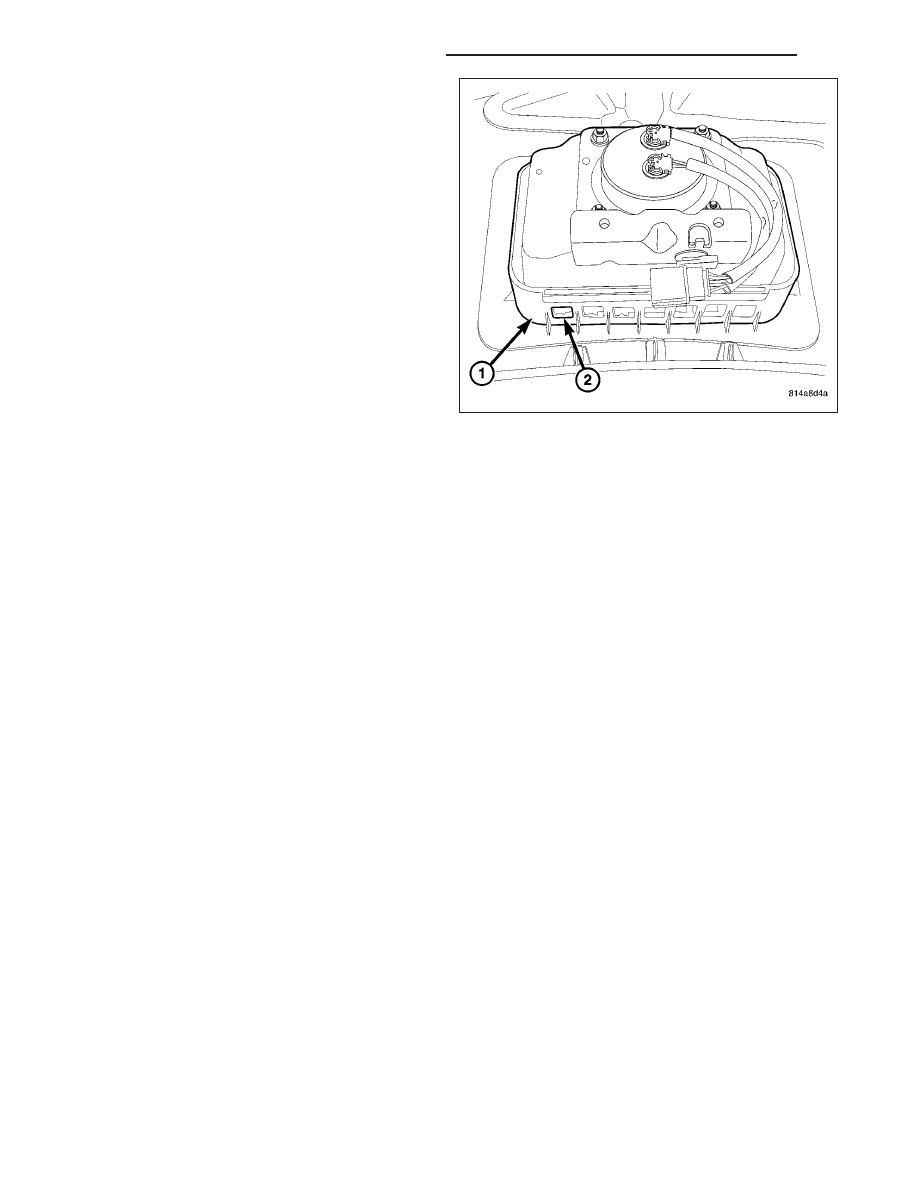Jeep Grand Cherokee WK. Manual - part 662

7. Disengage each of the hooks (2) of the airbag
housing from the windows in the forward and rear-
ward vertical walls of the airbag retainer (1) on the
underside of the top pad. To disengage the hooks,
use hand pressure to push the adjacent edge of
the airbag housing firmly and evenly downward into
the retainer receptacle, while at the same time pull-
ing outward on the upper edge of the receptacle
wall.
8. With all of the hooks disengaged, lift the housing,
inflator, and cushion as a unit from the retainer
receptacle on underside of the instrument panel top
pad.
INSTALLATION
WARNING: To avoid personal injury or death, on vehicles equipped with airbags, disable the supplemental
restraint system before attempting any steering wheel, steering column, airbag, seat belt tensioner, impact
sensor, or instrument panel component diagnosis or service. Disconnect and isolate the battery negative
(ground) cable, then wait two minutes for the system capacitor to discharge before performing further diag-
nosis or service. This is the only sure way to disable the supplemental restraint system. Failure to take the
proper precautions could result in accidental airbag deployment.
WARNING: To avoid personal injury or death, when removing a deployed airbag, rubber gloves, eye protec-
tion, and a long-sleeved shirt should be worn. There may be deposits on the airbag unit and other interior
surfaces. In large doses, these deposits may cause irritation to the skin and eyes.
WARNING: Use extreme care to prevent any foreign material from entering the passenger airbag, or becom-
ing entrapped between the passenger airbag cushion and the instrument panel top pad. Failure to observe
this warning could result in occupant injuries upon airbag deployment.
WARNING: The instrument panel top pad must never be painted. Replacement top pads are serviced in the
original colors. Paint may change the way in which the material of the top pad responds to an airbag
deployment. Failure to observe this warning could result in occupant injuries upon airbag deployment.
WARNING: Use extreme care to prevent any foreign material from entering the passenger airbag, or becom-
ing entrapped between the passenger airbag cushion and the passenger airbag door provision of the instru-
ment panel top pad. Failure to observe this warning could result in occupant injuries upon airbag
deployment.
NOTE: The following procedure is for replacement of a faulty or damaged passenger airbag. If the airbag is
faulty or damaged, but not deployed, review the recommended procedures for handling non-deployed sup-
plemental restraints. (Refer to 8 - ELECTRICAL/RESTRAINTS - STANDARD PROCEDURE - HANDLING NON-
DEPLOYED SUPPLEMENTAL RESTRAINTS). If the passenger airbag has been deployed, review the
recommended procedures for service after a supplemental restraint deployment before removing the airbag
from the vehicle. (Refer to 8 - ELECTRICAL/RESTRAINTS - STANDARD PROCEDURE - SERVICE AFTER A
SUPPLEMENTAL RESTRAINT DEPLOYMENT).
8O - 470
RESTRAINTS - SERVICE INFORMATION
WK